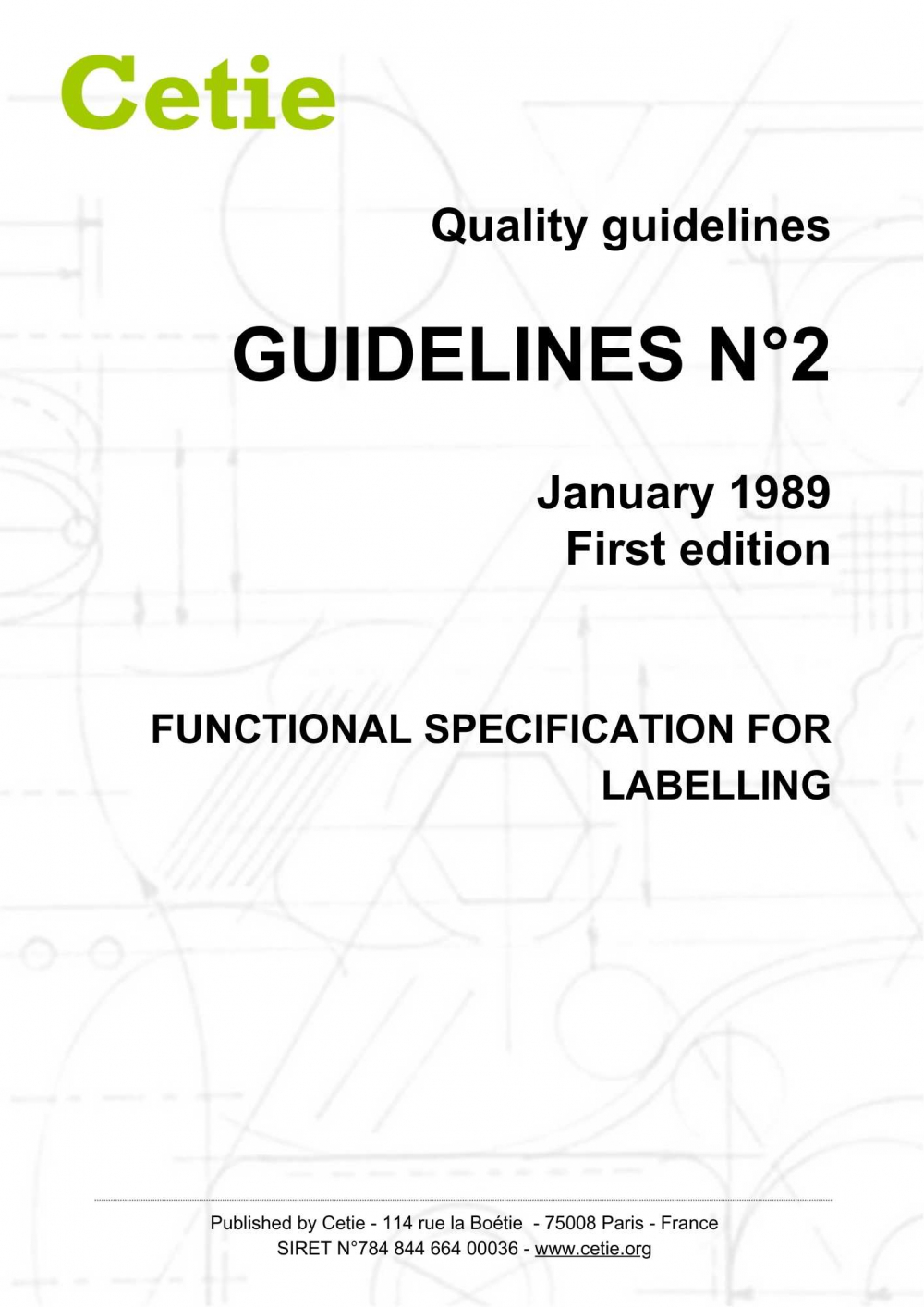Guidelines No. 2
First edition
Published on: 01/03/1989
Functional specification for labelling
Scope of application
A bottle intended for retail sale, displayed on the shelf, or placed on the consumer's table is inconceivable without its decorative and functional packaging, which, in addition to sealing and capping, primarily consists of labelling.
Labelling serves multiple functions:
Product Information & Identification:
These functions align with quality considerations, including:
Presentation:
Ensuring the label remains intact and maintains its quality over time Several key influencing factors play a role in the labelling process:
Labelling serves multiple functions:
Product Information & Identification:
- Clear identification of the product
- Legal and regulatory compliance
- Additional marking if required
- Enhancement and customization of the product's visual identity
- Potential advertising and promotional messaging
These functions align with quality considerations, including:
Presentation:
- Product positioning, readability, and aesthetics
Ensuring the label remains intact and maintains its quality over time Several key influencing factors play a role in the labelling process:
- Labeling machine ;
- Bottle characteristics ;
- Labels (materials and specifications) ;
- Adhesive (if applicable) ;
- Operator expertise.
Table of contents
Foreword
1. The Labelling Machine
1.1. Characteristics of bottles at the machine's entry point
1.2. Characteristics of the packaging elements
1.3. Characteristics of the labelling machine
1.4. Operational characteristics
1.5. Long-term evolution and lifespan
2. The Bottle
1. The Labelling Machine
1.1. Characteristics of bottles at the machine's entry point
1.2. Characteristics of the packaging elements
1.3. Characteristics of the labelling machine
1.4. Operational characteristics
1.5. Long-term evolution and lifespan
2. The Bottle
2.1. Definition of the labelling process
2.2. Description of the bottle
2.3. Orientation and positioning
2.4. Surface treatment
2.5. Specific operational constraints
3. The Label
3.1. Operational characteristics
3.2. Description of the paper
3.3. Printing specifications
3.4. Cutting definition
4. The Adhesive
4.1. Definition of the labelling process
4.2. Machine-related characteristics
4.3. Label-related characteristics
4.4. Specific requirements
4.5. Operational characteristics
2.2. Description of the bottle
2.3. Orientation and positioning
2.4. Surface treatment
2.5. Specific operational constraints
3. The Label
3.1. Operational characteristics
3.2. Description of the paper
3.3. Printing specifications
3.4. Cutting definition
4. The Adhesive
4.1. Definition of the labelling process
4.2. Machine-related characteristics
4.3. Label-related characteristics
4.4. Specific requirements
4.5. Operational characteristics
History
First édition: 03/1989
First édition: 03/1989
Contributors
COURVOISIER, CUSENIER, HENKEL, JAMBON RUEL, KRONENBOURG, LA GIRONDINE, MARTINI & ROSSI, SAINT GOBAIN EMBALLAGE, VIREY GARNIER.
Document under responsibility of working group:
Labelling on glass
WG chair: Arnaud STAIB - CCL Label S.A.S
This joint working group develops guidelines and best practices for the functional specification for labels and application machines on glass packaging, ensuring proper label adhesion and performance, optimising pressure-sensitive labelling processes, and improving label separation in the glass recycling and reuse processes. By bringing together key stakeholders, including adhesive and label manufacturers, glass producers, labelling machine suppliers, and fillers, the group aims to establish documentation that enhances packaging efficiency, sustainability, and overall performance.
